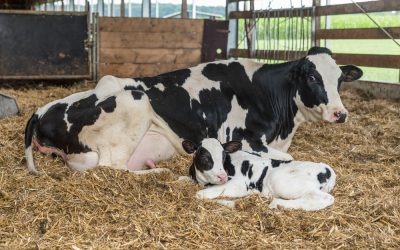D.Temple, E.Mainau, X.Manteca
Milking is considered one of the most important routine tasks done by dairy cattle farmers and is also rated as the most enjoyable task. Milking is also the most frequent direct interaction between dairy cows and the stockperson. Chronic pain associated to diseases or injuries and any stressful situations occurring during milking are likely to produce a decrease in milk yield.
In terms of diseases and injuries directly related to milking, a special attention should be given to the prevention of teat injuries and mastitis (especially when contagious mastitis microorganisms are involved). Mastitis is more likely to happen at the time of peak yield and cows with high milk flow rate may be more prone to pick up infections through the teat canal. Some evidence suggests that the incidence of mastitis may be reduced by increasing the frequency of milking. On the other hand, increasing the frequency of milking may also increase the risk of teat damage and secondary invasion by environmental pathogens after each milking.
Automatic milking has become a common practice in dairy production. With respect to the welfare of the dairy cow, the use of automatic milking systems has both advantages and disadvantages. Some recent studies conclude that automatic milking and conventional milking are equally acceptable in terms of welfare of the dairy cow.
“Routine tasks of animal care, such as teat disinfection and cleaning and the control of the milking equipment are of major importance in ensuring good animal welfare during milking”
Acute stress during milking reduces milk yield through a central inhibition of oxytocin secretion and peripheral actions of catecholamines. Oxytocin, which is a hormone secreted by the central nervous system into the blood stream, is the main mediator of the milk ejection reflex. The secretion of oxytocin is then of major importance to optimize milk production. A variety of acute stressors, such social isolation, novel surroundings (especially for heifers) or fear of people present at milking lead to an inhibition of milk ejection.
Besides its impact on productivity, the behavioural response of cows to a stressful situation increases the risk of injury for the stockman.
The presence of an aversive handler (sudden and unpredictable movements, shouting and/or slapping) during milking is sufficient to cause the cows to “hold-back” milk due to the suppression of oxytocin secretion. Studies comparing farms with similar environmental conditions and cows with the same genetic background have shown that farms with the highest production are those with stockpersons that speak to and touch their cows more often. The animals are in turn less frightened, less reluctant to being driven and more likely to approach the stockperson. Under controlled conditions, just the presence of an aversive handler during milking is sufficient to increase residual milk by 70% and therefore reduce milk yield.
“At commercial level, 30% of the variability in annual milk production between farms can be attributed to differences in the degree of fearfulness of the cows”
- It is then important to take advantage of each milking event to optimize the interaction between the farmer and the cows and to avoid some routine behaviours that could result in the cows becoming more fearful (e.g. sudden and rapid movements):
- Maximize positive contacts such as talking, resting the hand on the back of the cows, patting the cows, moving slowly and in a predictable manner , etc.
- Minimize negative contacts such as shouting, slapping or hitting the cows, doing fast and unexpected movement, etc. Other means of improving animal movement can also be used: providing small food rewards when dairy cows enter the milking parlour may reduce the time the cows take to enter the parlour, which in turn reduces the need to push the cows or use other aversive handling techniques.
Several behavioural indicators can be useful to identify welfare problems related to milking:
- Stepping during milking can be used as an indicator of general discomfort (e.g. chronic pain) and fear towards humans. A higher frequency of stepping behaviour is observed in anxious and nervous animals. Cows which are managed gently show a shorter flight distance (distance between the person approaching the animal and the animal itself at the moment of withdrawal) and less stepping behaviour during milking.
- Cows which experience pain due to teat lesions are more likely to kick during milking. In contrast, fearful cows do not usually show kicking behaviour. Kicking is also an indicator of discomfort caused by low milk flow and vacuum milking.
- Defecation, urination and vocalization in the milking parlour are indicators of acute stress and fear in cows. These measures increase when the cows are isolated or introduced in novel surroundings. Interestingly, the occurrence of these indicators decreases in presence of the stockperson (when human-animal relationship is good). Human presence may therefore reduce the fear responses of cows during milking.



